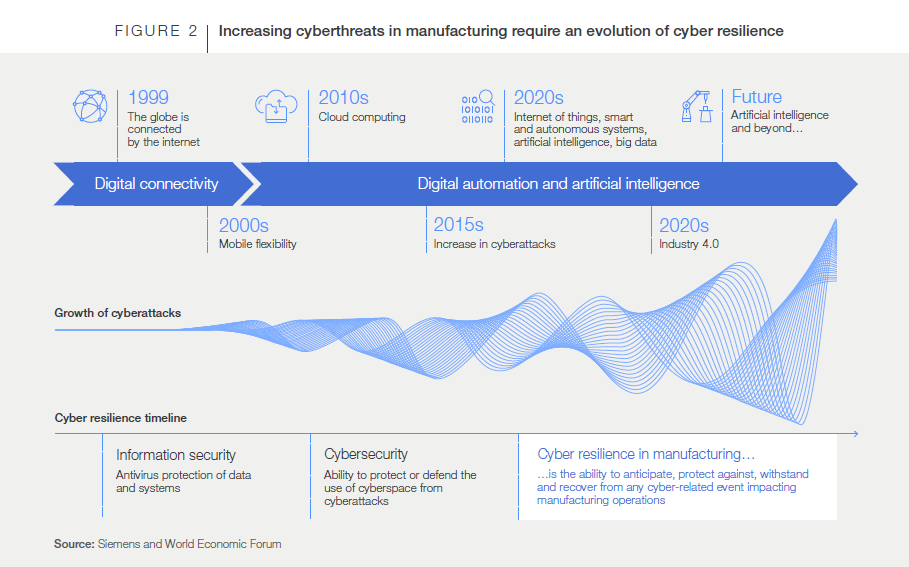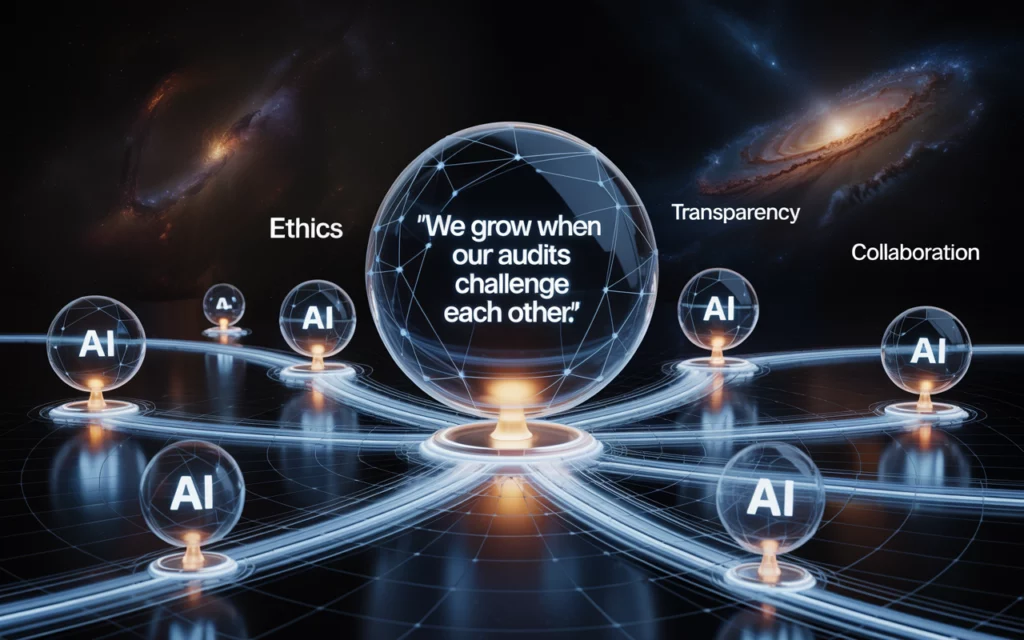World Economic Forum paper, April 2024
In an age dominated by digital transformation, the manufacturing sector stands as a critical pillar of the global economy. Yet, its growing dependence on interconnected digital systems has also rendered it highly susceptible to cyber threats. The “Building a Culture of Cyber Resilience in Manufacturing” white paper, published by the World Economic Forum in May 2024, highlights the sector’s vulnerability and the pressing need for strategic approaches to mitigate these risks. As manufacturers increasingly integrate digital technologies, the imperative to develop comprehensive cyber resilience frameworks becomes paramount to safeguard both their operational integrity and market competitiveness.

The Critical Need for Cyber Resilience
The manufacturing industry is a vast and intricate ecosystem that spans numerous stakeholders including suppliers, producers, and distributors. Each component of this ecosystem not only contributes to the operational output but also adds layers of potential cyber vulnerabilities. The white paper points out a staggering statistic: over the last three years, one in four cyber incidents targeted the manufacturing sector, with a significant number involving ransomware attacks. This alarming trend underscores the urgent need for robust cyber defenses tailored to the unique challenges and complexities of the manufacturing landscape.

Unpacking the Challenges to Cyber Resilience
The journey toward cyber resilience is fraught with challenges that can be broadly categorized into five key areas:
- Divergent Cultural and Resource Priorities: The traditional separation between IT and OT (Operational Technology) departments creates significant challenges. Each operates with distinct priorities and governance frameworks, making unified cybersecurity protocols difficult to implement.
- Legacy Systems and Increased Connectivity: As the sector embraces digital transformation, it becomes increasingly connected, not just internally but also with external partners. This connectivity exposes outdated legacy systems that were not designed with modern cybersecurity threats in mind.
- Operational Sensitivity to Downtime: Manufacturing processes are typically optimized for continuous operation with minimal downtime. This characteristic makes them particularly vulnerable to ransomware and other forms of cyberattacks that can cause operational disruptions.
- Strategic Alignment with Business Objectives: There is often a tension between immediate business goals and the strategic investments required for long-term cyber resilience. Balancing these can be challenging, especially in a competitive market environment.
- Complex Regulatory Environment: The manufacturing sector must navigate a maze of regulations that vary by geography and specific market sectors. Compliance adds another layer of complexity to cybersecurity efforts.
Guiding Principles for Cyber Resilience

To effectively address these challenges, the World Economic Forum’s white paper proposes three foundational principles:
- Embedding Cyber Resilience as a Core Business Strategy: It is vital for cyber resilience to become an integral part of the business model, permeating every level of the organization from top executives to floor operators.
- Integrating Cyber Resilience by Design: Cybersecurity measures should be incorporated at the onset of system design and across all business processes, ensuring that they are inherent and not an afterthought.
- Proactive Ecosystem Engagement: Manufacturers must manage not only their direct cybersecurity but also that of their entire supply chain, requiring active collaboration and management across all ecosystem stakeholders.
Case Studies and Real-World Applications
The paper highlights several case studies where major global manufacturers have successfully implemented these principles. For instance, a leading consumer goods company initiated a program to embed cybersecurity awareness directly into their production lines, significantly reducing vulnerability to external threats. Another example involves a multinational automotive manufacturer that integrated cybersecurity evaluations into the procurement process, thereby enhancing its overall security posture.
Conclusion
As the digital landscape evolves, so too must the strategies to protect it. The white paper serves as a crucial blueprint for manufacturing leaders, urging them to adopt a proactive and integrated approach to cybersecurity. This strategic focus is not only about protecting against immediate threats but also about securing the future of manufacturing in an increasingly interconnected world.
In conclusion, building a culture of cyber resilience within the manufacturing sector is an ongoing process that demands continuous commitment and innovation. By adhering to the outlined principles and engaging all relevant stakeholders, manufacturers can fortify their defenses, enhance their operational reliability, and continue to thrive in the digital age.








